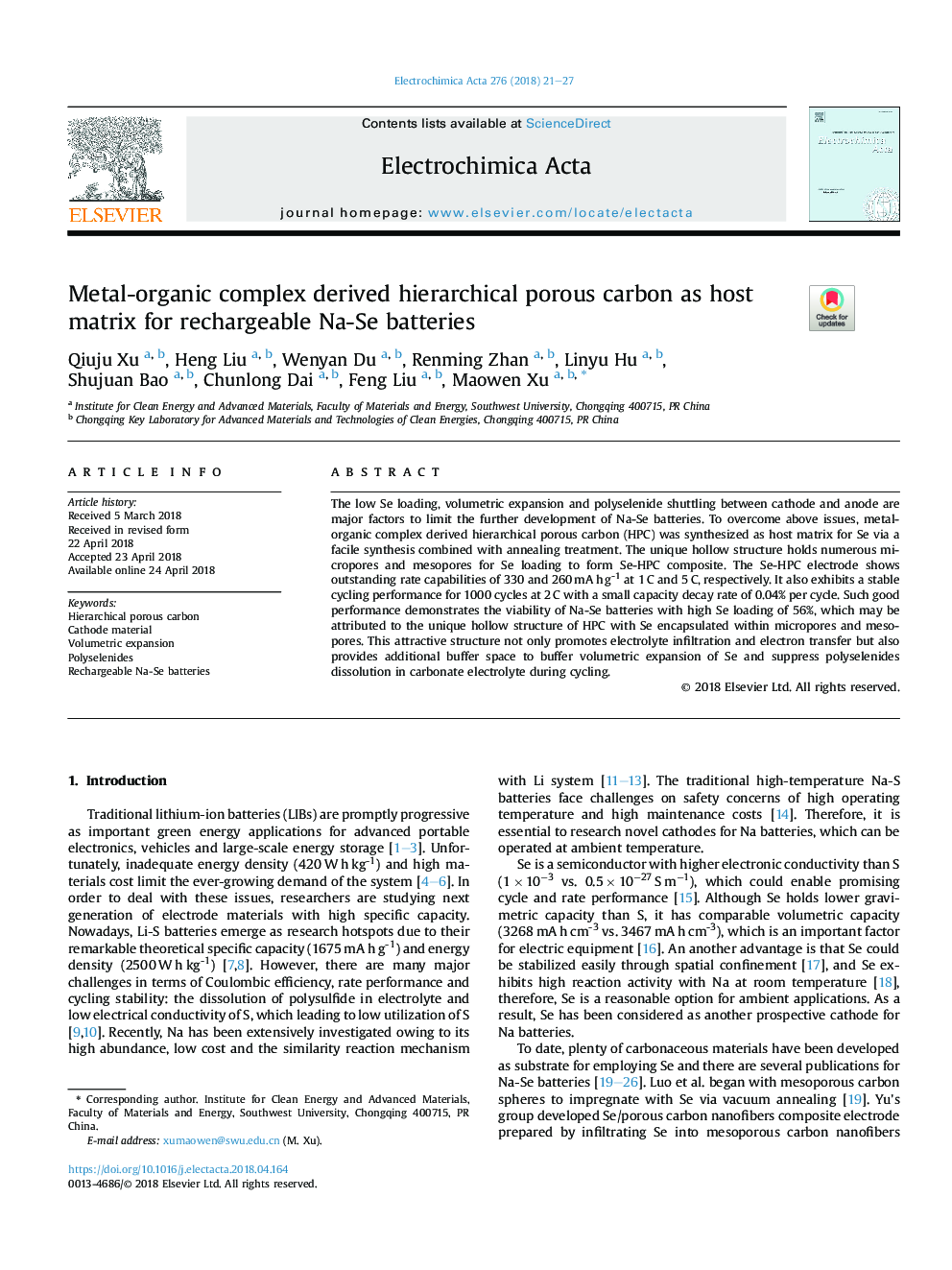| Article ID | Journal | Published Year | Pages | File Type |
|---|---|---|---|---|
| 6602797 | Electrochimica Acta | 2018 | 7 Pages |
Abstract
The low Se loading, volumetric expansion and polyselenide shuttling between cathode and anode are major factors to limit the further development of Na-Se batteries. To overcome above issues, metal-organic complex derived hierarchical porous carbon (HPC) was synthesized as host matrix for Se via a facile synthesis combined with annealing treatment. The unique hollow structure holds numerous micropores and mesopores for Se loading to form Se-HPC composite. The Se-HPC electrode shows outstanding rate capabilities of 330 and 260â¯mAâ¯hâ¯g-1 at 1â¯C and 5â¯C, respectively. It also exhibits a stable cycling performance for 1000 cycles at 2â¯C with a small capacity decay rate of 0.04% per cycle. Such good performance demonstrates the viability of Na-Se batteries with high Se loading of 56%, which may be attributed to the unique hollow structure of HPC with Se encapsulated within micropores and mesopores. This attractive structure not only promotes electrolyte infiltration and electron transfer but also provides additional buffer space to buffer volumetric expansion of Se and suppress polyselenides dissolution in carbonate electrolyte during cycling.
Related Topics
Physical Sciences and Engineering
Chemical Engineering
Chemical Engineering (General)
Authors
Qiuju Xu, Heng Liu, Wenyan Du, Renming Zhan, Linyu Hu, Shujuan Bao, Chunlong Dai, Feng Liu, Maowen Xu,
